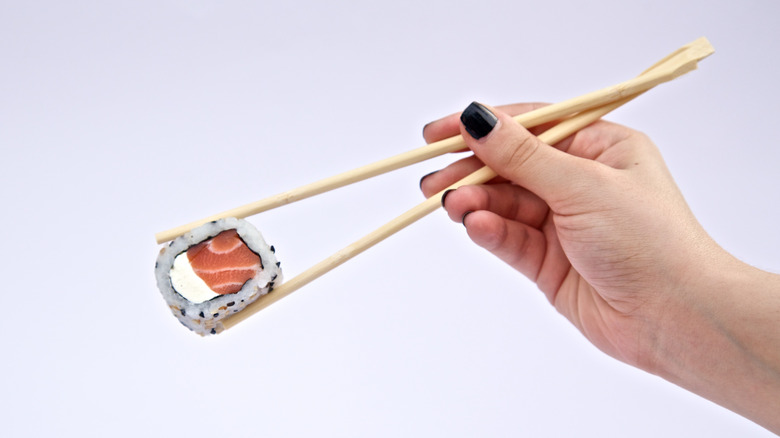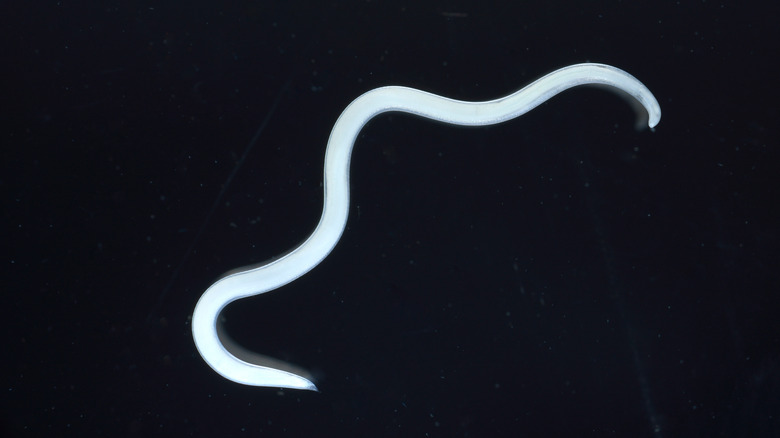Why You Should Be Cautious When Making Sushi At Home
Whether it's a rainbow roll or salmon nigiri, sushi is a dish best served fresh. Defined by its "rawness", these colorfully topped mounds of rice arouse curiosity, but also apprehension. Although sushi restaurants in the US generate a $22 billion revenue (via IBISWorld), many still consider consuming raw fish a hazard. While you could leave sushi-making to professional itamae, making sushi at home can be a fun experience — so long as you're cautious of a few things.
Sushi can be divided into categories, which Restaurant Clicks describes as sashimi (sliced raw fish), nigiri (pressed sushi rice topped with raw fish), and maki (rolled sushi wrapped in nori). Though you might expect sushi to taste or smell quite fishy, that's far from the truth. Instead, sushi has a mild and almost sweet flavor that benefits from an umami burst when dipped into soy sauce or smeared with wasabi.
Of course, starting with high quality fish is key when making sushi. A visit to a reputable fish market is the best way to gauge freshness, rather than looking at labels like "sushi-grade" or "sashimi-grade". MasterClass explains that these labels are often insignificant because there isn't actually a government-regulated grading system for fish in the U.S. But, what exactly is the danger in eating raw fish, if any at all?
Beware the worms (among other things)
Almost every piece of sushi is at risk of containing seaborne-parasites. Though the intestinal worms are unlikely to cause symptoms — or at least none beyond abdominal pain, diarrhea, and vomiting — anisakiasis from raw or undercooked fish may require hospitalization. The good news? Less than 3,000 cases are reported worldwide on an annual basis, claims Emerging Infectious Diseases.
Despite the fact that cooking is the only definite way to eliminate the potential of parasites, the FDA states that raw seafood can be blast frozen at temperatures of −35°C for 15 hours or conventionally frozen at −20° C for 7 days to kill any parasites. Serious Eats also suggests avoiding freshwater fish as they're more susceptible to tapeworms, and instead buying fresh, whole marine fish like tuna and farmed salmon. It also can't hurt to check the flesh for any visible worms as you slice your sashimi.
But, besides parasites, Insider warns sushi lovers to be wary of mercury poisoning from eating excessive amounts of sashimi, along with exposure to toxins in farm-raised fish, and even food borne illnesses like listeria, salmonella, or scombroid from cross contamination due to an unsanitary workstation. If this all sounds a bit frightening, play it safe and roll up this cooked spicy crab salad sushi!

